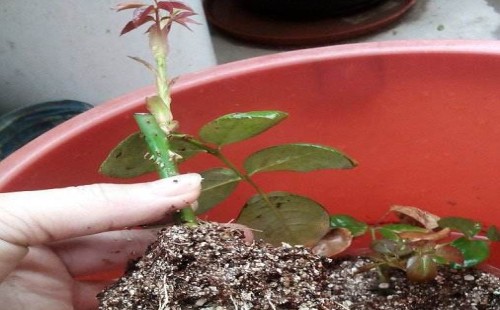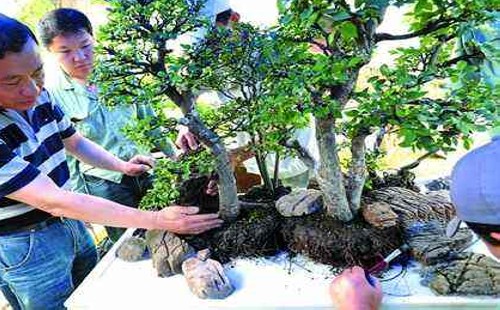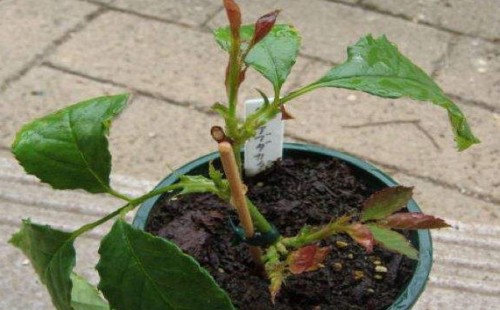How did the branches blacken after the rose cuttings?
As a family user, potted rose seedlings are generally obtained by cutting, and the operation method is relatively simple, not only in soil, but also in water. As long as the cutting methods are scientific and the means of management and protection are reasonable, the two cutting methods are very easy to be successful. However, sometimes different things happen. The most common problem in the process of cutting is the blackening of branches after rose cutting. what's going on?

As we all know, the cutting of rose is usually carried out in summer, and the temperature in summer is relatively high, and it is more conducive to the rooting and germination of branches when the ambient temperature is kept between 25 ℃-30 ℃, so cutting activities should be carried out in this temperature environment. So, what happens when the temperature of the cutting environment exceeds 30 ℃?
In fact, for rose cutting breeding seedlings, whether it is water or soil cutting, the temperature of the cutting environment should not be too high. If the temperature is often more than 30 ℃, the cutting branches are easy to blacken and even rot. It is mainly due to high temperature, humid environment, and poor ventilation, which often creates a comfortable hotbed for germs. Under the infection and invasion of germs, it is very easy or even inevitable for cuttings to turn black.
Now that we know the reason for the blackening of branches in the process of cutting, we should take preventive measures in advance in order to ensure the success of cutting activities. So, in order to avoid the blackening of branches in the process of cutting, what should we do?
1. If the rose seedlings are propagated in water, then we must control the ambient temperature between 25 ℃-30 ℃. Original and in order to keep the water quality clean, we also need to change water frequently. The higher the temperature is, the more frequently we need to change water. At the same time, we also need to ensure that the environment is ventilated smoothly to avoid a hot, humid and airtight environment. In this way, the phenomenon of blackening of branches in the process of water insertion of rose can be prevented.
2. If we use soil planting to breed rose seedlings, we also need to avoid an airtight hot and humid environment, otherwise the branches will still be blackened. First of all, to ensure that the cutting substrate permeability is good, there will not be stagnant water phenomenon, while ensuring that the cutting environment temperature between 25 ℃-30 ℃, it is recommended to put it in the balcony shaded place to ensure smooth environmental ventilation. In this way, it can also ensure that the branches of the rose will not blacken.
In short, no matter through water cutting or soil cutting to breed rose seedlings, the cutting environment should avoid the situation of damp, hot and unventilated, so that the phenomenon of blackening and decay of cuttings can be effectively prevented and robust cuttings can be successfully obtained.
Time: 2019-06-07 Click:
- Prev

How short are the branches of elm bonsai
Elm is a kind of deciduous tree, generally, whether it is the daily maintenance management or the modeling of bonsai, usually by means of pruning. The main purpose of the pruning of elm bonsai is to shape a good plant type, so we can't just focus on pruning, and we should properly consider keeping branches in the process of pruning.
- Next

Selection method of cutting branches of Rose
Rose seedlings are mostly obtained by means of cutting, and whether the propagation seedlings can be successful or not, the selection of branches is very important. The higher the quality of the branch, the higher the success rate after cutting; on the contrary, the lower the quality of the branch, the lower the survival rate after cutting. So, how to choose rose cuttings?
Related
- Fuxing push coffee new agricultural production and marketing class: lack of small-scale processing plants
- Jujube rice field leisure farm deep ploughing Yilan for five years to create a space for organic food and play
- Nongyu Farm-A trial of organic papaya for brave women with advanced technology
- Four points for attention in the prevention and control of diseases and insect pests of edible fungi
- How to add nutrient solution to Edible Fungi
- Is there any good way to control edible fungus mites?
- Open Inoculation Technology of Edible Fungi
- Is there any clever way to use fertilizer for edible fungus in winter?
- What agents are used to kill the pathogens of edible fungi in the mushroom shed?
- Rapid drying of Edible Fungi

